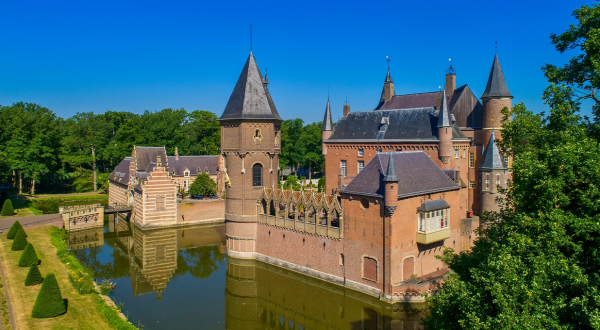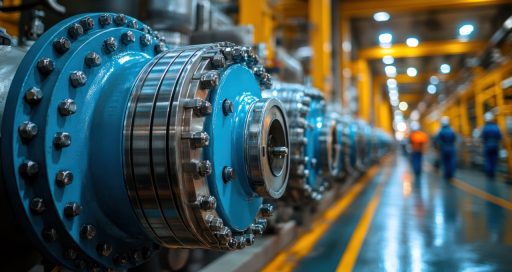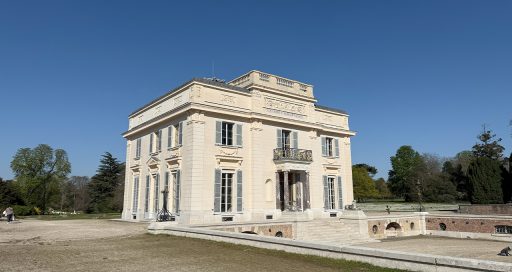Geothermal energy is emerging strongly as a local source of low-carbon power. Buildings are increasingly making use of it. We visit Belgium and Portugal, where VINCI Energies Building Solutions business units are involved in two exciting projects.

Towns and cities are increasingly turning to geothermal energy as a local, low carbon power source, often used to supply urban heat networks. This method involves heating a fluid by circulating it deep underground before returning it to the surface loaded with thermal energy.
Geothermal energy can be used to heat buildings via heat pumps, but can equally be used to cool them in summer by circulating the same fluid through the ground, which is cooler than the outside air. It can be obtained in various ways (see box).
Numerous geothermal projects in Belgium
VINCI Energies Building Solutions business units have been developing expertise in this new energy source for several years. Hooyberghs HVAC in Belgium is a prime example: “Our business unit has a lot of experience on the hydraulic side and also in selecting all the components required for this type of installation,” says Gerry Hannes, Business Unit Manager at Hooyberghs HVAC. “For the drilling, we depend strongly on SMET, who are experts in that area.”
Hooyberghs has completed numerous projects over the years, more recently prioritising the aquifer thermal energy storage (ATES) technique where ground conditions permit. “It’s basically the least expensive way of using geothermal energy in buildings,” says Gerry Hannes.
Hooyberghs HVAC is currently working on a project to create new infrastructure at a military base. From May 2025, the business unit will be responsible for technical installations including an ATES system with a potential output of more than 3 MW. The project is due for completion in April 2026.
Geothermal energy offers improved energy efficiency and a reduced environmental footprint
“The main challenges on this project relate to regulations and government permits,” explains Gerry Hannes, “knowing we have to take precautions to ensure that the water reinjected into the ATES is no warmer than 25 °C.”
As they are working with geothermal installations, Hooyberghs HVAC can use heat pumps of the water-water type. “This ensures a high EER (energy efficiency ratio) or cooling energy coefficient.”
He continues: “Higher EER values indicate more efficient units, which can help reduce energy consumption and shrink heating and cooling bills by a factor of 5.5 with water-water, compared with 2.5 for air-water. With a geothermal system, we can cool buildings for free down to a cold-water temperature of 12 °C.”
Ombria Resort project in Portugal
In Portugal, another VINCI Energies Building Solutions business unit, Sotécnica, has developed real expertise in the use of geothermal energy. Its latest achievement in this area is Ombria Resort, a luxury housing project in the Algarve region of southern Portugal. Sotécnica played a central role in this geothermal project.
Tiago Mendes, Commercial Manager at Sotécnica, explains: “Drawing on our considerable expertise in mechanical engineering, we successfully installed advanced HVAC systems, a building management system, comprehensive plumbing and sanitation solutions, plus the fire protection and gas networks.”
As well as harnessing geothermal energy, the Ombria Resort project, which opened its doors on 1 October 2024, incorporated numerous sustainable initiatives, from bioclimatic architecture for nearly zero energy buildings (NZEB) and the use of reclaimed rainwater for irrigation and landscaping to solar energy and innovative waste management policies.

©Ombria Algarve
But there were plenty of challenges to be overcome, says Tiago Mendes: “We had to accommodate a whole range of standards and sustainable practices, install HVAC systems suited to the local climate while maximising energy efficiency, and develop a sophisticated rainwater management system, which required meticulous planning and execution.”
He continues: “We also had to combine modern technology with traditional Algarve construction methods, working with multiple stakeholders, architects, engineers and contractors to ensure the transparent integration of diverse systems and components.”
Ultimately, the geothermal solution at Ombria Resort delivers enhanced energy efficiency, with lower energy consumption and lower costs for public services. This reliable and renewable energy source considerably reduces the site’s carbon footprint.
And a geothermal system has the advantages of a small physical footprint with no generation of noise or fumes. All these benefits make this solution a star performer in energy and environmental terms.
ATES, BTES or SWAC?
There are two ways of harnessing geothermal energy. The first uses the ATES (aquifer thermal energy storage) system, which involves the extraction of water from an aquifer. The second uses a closed-loop system – BTES (borehole thermal energy storage) – with borehole storage using geothermal probes to extract heat stored underground by thermal conduction through a heat pump. Which of these systems to use depends largely on the soil type. The ATES system only works in clay soils, while the BTES system is suitable for any soil type. And innovative technologies such as SWAC (sea water air conditioning), which collects cold water from deep in the ocean and uses it to cool buildings, are making new geothermal energy solutions viable. In 2022, with support from VINCI Energies, the French Polynesia Hospital Centre (CHPF) installed a SWAC system, which has halved the hospital’s electricity consumption and reduced its CO2 emissions by 5,000 tonnes a year.
09/15/2025
Featured photo: ©Ombria Algarve





